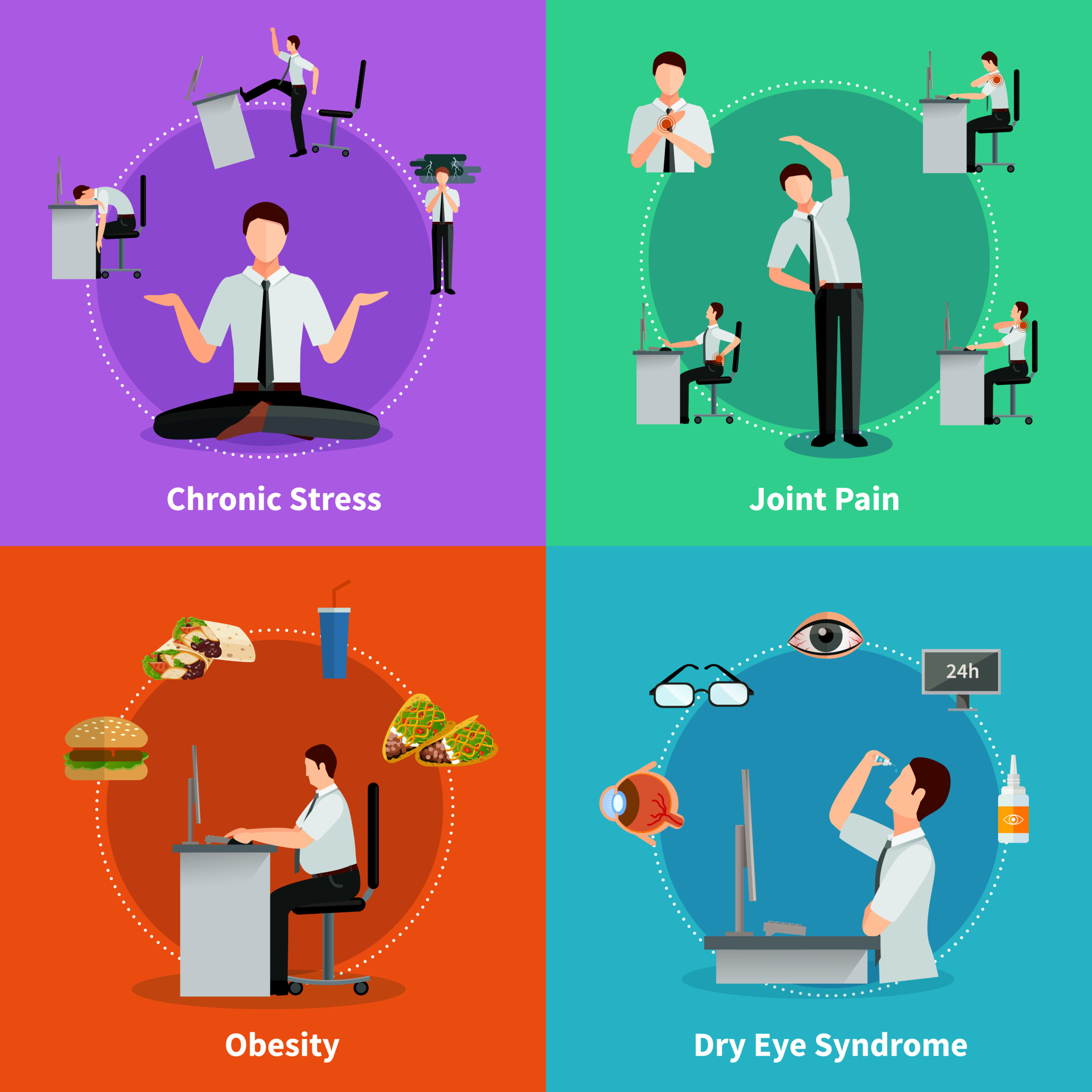Introduction
In the whirlwind of our modern lives, achieving a harmonious work-life balance has become more than just a buzzword – it’s a necessity for our overall well-being. It is more than just dividing time between office and personal life; It’s about quality, fulfillment and maintaining our sanity in a fast-paced world.
Work-life balance is not a static concept but a dynamic balance that evolves as we progress through different stages of our lives and careers. And it is during these transitional periods that striking the right balance can be the most challenging but important.
Picture this: You may be transitioning to a new job or promotion that demands more of your time and energy. You may be entering the exciting but turbulent phase of becoming a parent for the first time, which brings a new dimension to work-life. Or maybe you’re considering a significant career change or embarking on the entrepreneurial journey you’ve always dreamed of.
Maintaining a healthy work-life balance can feel like an elusive goal during these transitional moments. The demands of change can tip your scales, leaving you feeling overwhelmed, stressed, and struggling to get back on your feet.
In this blog post, we will explore the essence of work-life balance and its importance, especially during these transitional periods. We’ll take an in-depth look at strategies that can not only help you regain your balance but also help you move through times of change. Whether you’re climbing the corporate ladder, raising a growing family, or boldly embracing new opportunities, the wisdom shared here will empower you to navigate changes with grace, flexibility, and a new sense of balance.
Understanding Work-Life Balance
Defining Work-Life Balance
Quote: “Success isn’t about climbing the career ladder; it’s about how satisfying your life is on a daily basis.” – Arianna Huffington
Work-life balance is more than a catchphrase; It is a dynamic balance that involves the distribution of time, energy and attention between work and personal life. It is the ability to live a fulfilling professional life while nurturing personal well-being, relationships and passion.
Statistics: According to a study by the World Economic Forum, work-life balance is one of the top factors contributing to overall job satisfaction. Employees who perceive a good work-life balance are more engaged and productive.
Consequences of imbalance

Quote: “There’s no such thing as work-life balance. Everything worth fighting for unbalances your life.” – Alain de Botton
Although pursuing our professional goals is essential, ignoring the need for balance can have serious consequences. An imbalance between work and personal life can result in long-term stress, burnout, and strain in relationships. Research from the American Institute of Stress shows that job stress significantly contributes to a variety of health problems, with 80% of workers reporting stress on the job. A Gallup survey found that 23% of employees often or always feel tired at work. Burnout is often the result of working long hours without adequate balance.

Quote: “Happiness does not lie merely in the possession of money; it lies in the joy of achievement, the thrill of creative endeavor.” -Franklin D. Roosevelt
Achieving success in your career is undoubtedly important, but it should not come at the expense of your overall well-being. By maintaining balance, you can not only achieve professional success but also experience the joy of a fulfilling personal life. By understanding the essence of work-life balance and accepting the consequences of imbalance, you can begin to understand why this balance is an important aspect of a healthy and prosperous life. It is not about giving up on your ambitions but about optimizing your journey towards success and fulfillment.
Strategies for Maintaining Work-Life Balance

Set clear boundaries
- Define work hours: Establish a clear distinction between your work hours and personal time. Let your coworkers, family, and friends know about these boundaries.
- Create a dedicated workspace: Designate a specific area in your home as your workspace. When you’re in this space, you’re in work mode; When you leave it, you are off duty.
- Use technology wisely: Leverage technology to your advantage. Set up automatic email responses outside of work hours to manage expectations and avoid pressure to respond immediately.
- Communicate boundaries: Be clear about your boundaries to your employer or clients. Let them know what your hours are and when you can be contacted.
Prioritize self-care
- Exercise regularly: Incorporate physical activity into your daily routine, even if it’s just a 20-minute walk or a short yoga session. Exercise boosts your mood and energy levels.
- Practice mindfulness: Dedicate time to mindfulness practices like meditation or deep breathing exercises. These techniques can reduce stress and improve focus.
- Nourish your body: Pay attention to your diet. Eat nutritious food and stay hydrated. Avoid excessive caffeine and sugar, which can cause energy loss.
- Hobbies and Passions: Make time for your hobbies and passions. Indulging in your favorite activities rejuvenates your soul and provides relief from work-related stress.
Time management
- Prioritize tasks: Identify your most important tasks for the day and tackle them first. This approach ensures that important work is completed before potential distractions arise.
- Use time segments: Divide your day into time segments for specific tasks. Dedicate focused periods of time to work, and also schedule breaks and personal time.
- Avoid multitasking: Avoid the temptation to multitask, as this can reduce productivity and increase stress. Focus on one task at a time.
- Delegate tasks when possible: If you have the resources, delegate tasks that other people can handle. Delegating frees up your time for more important responsibilities.
Communication skills
- Effective communication: Clearly and firmly communicate your needs to your employer or clients. Express when you need flexibility or adjustments in your work arrangements.
- Regular updates: Stay in touch with your colleagues and supervisors. Regular updates can prevent misunderstandings and ensure everyone is on the same page.
- Team Collaboration: Collaborate with your team members to share workload and responsibilities. Teamwork can lighten individual burdens.
Flexibility and adaptability
- Be flexible: Recognize that work-life balance is not a fixed concept. It evolves as your circumstances change. Be flexible and adapt your strategies accordingly.
- Resilience: Develop resilience to deal with unexpected challenges. Resilience enables you to recover from setbacks and continue searching for balance.
- Learn to say no: Don’t hesitate to decline extra work or commitments when you’re already stretched thin. Learning to say no is essential to maintain balance.
Remember that achieving work-life balance is an ongoing process, and may require some experimentation to find the strategies that work best for you. It is important to prioritize your well-being while pursuing your professional goals. By implementing these strategies, you can create a sustainable and fulfilling work-life balance that supports both your career and personal life.
Work-Life Balance During Transitional Periods

Transitional periods can be some of the most challenging times to maintain a healthy work-life balance. Whether you’re facing a career change, adjusting to becoming a parent, or going through a significant life change, these strategies will help you find balance in times of change:
Transitional period and challenges
- Define the infection: Understand the nature of your infection. Is it a career change, a personal life event, or a combination of both? Identifying specific challenges can help you prepare.
- Acknowledge the stressors: Recognize the stressors associated with the transition. These may include increased responsibilities, uncertainty, or changes in routine.
- Embrace adaptability: Embrace the idea that flexibility and adaptability are important during transitional periods. Your old routines and strategies may require adjustment.
Adjusting to change
- Set realistic expectations: Accept that during the transitional period, it may be difficult to maintain the same balance as before. Set realistic expectations for yourself.
- Prioritize self-care: Make self-care a priority during the transition. Taking care of your physical and mental health will help you cope with change better.
- Time Management: Reevaluate your time management strategies. Allocate your time and energy to the most important aspects of your life during the transition.
- Delegate responsibility and seek help: Don’t be afraid to delegate tasks or ask for help from family, friends or coworkers. Accepting help can lighten your burden.
Looking for support
- Lean on your network: Reach out to your support network during the transitional period. Share your challenges and seek advice or assistance when you need it.
- Professional guidance: If your change is career-related, consider seeking professional guidance from counselors, career coaches or industry experts.
- Mental health support: If you find yourself struggling with stress or mental health issues during the transition, don’t hesitate to consult a mental health professional.
- Family and friends: Communicate openly with your loved ones about your needs and challenges. They can provide emotional support and understanding.
Maintain boundaries
- Protect your personal time: Even during the transitional period, it is important to protect your personal time. Set boundaries to make sure you have moments of rest and relaxation.
- Schedule breaks: Schedule short breaks throughout your day to recharge. Use this time for activities that relax and refresh you.
- Evaluate commitments: Review your current commitments and consider what can be temporarily adjusted or postponed during the transition.
Stay focused on long term goals
- Vision and goals: Keep in mind your long-term goals and vision. Transitional periods often mark steps toward a brighter future.
- Celebrate progress: Celebrate small milestones and achievements during your transition. Recognizing progress can increase your motivation.
- Flexibility in goals: Be willing to adjust your goals as needed. Flexibility can help you adapt to changing circumstances.
Navigating transitional periods while maintaining work-life balance requires a combination of flexibility, adaptability, and self-care. By implementing these strategies and seeking support when needed, you can successfully manage the challenges that come with change and emerge from the transitional period with your well-being intact. Remember that balance is not a static state but an ongoing journey, and you have the tools to move forward during times of transition.
Real Life Success Stories

The most powerful way to understand the importance of work-life balance during transitional periods is to learn from individuals who have successfully navigated these challenges. These real-life success stories show that balance can be achieved even during times of significant change:
Success Story: Emma’s Journey to Balance
Meet Emma, a dedicated marketing professional with a thriving career at a renowned tech company. A turning point in Emma’s life came when she and her husband welcomed their first child into the world. The transition to motherhood brought new responsibilities, sleepless nights, and unexpected twists in her work-life balance.
Challenges and initial struggles
In the early days of motherhood, Emma struggled to balance the demands of her high-pressure job with the needs of her newborn. Lack of sleep and constant burden of responsibilities took a toll on his health. They faced a dilemma that may worry many working parents: how to excel in their careers while raising their family.
Strategies for Balance
Emma realized that maintaining balance was essential not only for her own health but also for her family’s happiness. Here are some of the strategies she adopted:
1. Flexible Work Arrangements: Emma talked to her employer about flexible work arrangements, including remote work options and adjusted hours. This allowed them to be present for their child while maintaining their professional responsibilities.
2. Effective Time Management: She became conscious about time management. Emma prioritized tasks at work, using tools like the Eisenhower Matrix to focus on high-impact activities and delegating where possible.
3. Utilizing Support Network: Emma drew on her support network, including her spouse and extended family, to share child care responsibilities. This gave her valuable moments of respite and allowed her to concentrate on work when needed.
4. Self-Care: Emma prioritized self-care, recognizing that being a well-rested and emotionally balanced mom was essential to her baby’s development. She made time for exercise and rest, even if it meant delegating household chores.
5. Mindfulness: She practiced mindfulness and meditation to manage stress and stay focused during busy days. Short breathing exercises became a stress reliever for her.
Results and Achievements
Through diligent effort and commitment to balance, Emma achieved remarkable results:
- She continued to excel in his career, earning promotions and recognition for his contributions.
- Her family flourished because she maintained strong relationships with her child and husband.
- Emma’s health and well-being improved, and she felt fulfilled in both her professional and personal roles.
Key takeaways

Emma’s story shows that, even during important transitional periods like becoming a parent, work-life balance can be achieved. By leveraging support networks, practicing effective time management, and prioritizing self-care, Emma managed to maintain balance, excel in her career, and raise her growing family.
Her journey reminds us that work-life balance is not about sacrificing one aspect of life for the other, but about finding harmony between the two. Emma’s practical strategies can serve as inspiration for anyone facing similar challenges during a transitional period, reinforcing the idea that balance can be achieved with determination, adaptability and a commitment to well-being. Could.
Conclusion
In conclusion, work-life balance is not a destination but a journey of self-discovery, growth and fulfillment. By understanding the essence of balance, adopting practical strategies, and learning from real-life examples, you have the tools to harness both your professional and personal life.
Changes will come and go, but your commitment to balance will remain a constant source of strength. Embrace your journey with confidence, knowing that balance is not a distant dream but a tangible reality waiting to be embraced. As you move forward on your unique path, remember that balance is not a luxury; It is a necessity that empowers you to live a life of purpose, resilience and well-being.

